KTM’s 2020 EXC Range: Engine Development
Compared with the frame, suspension and bodywork overhauls introduced to KTM’s 2020 range of enduro models, the engine upgrades seemed to take a bit of a back seat. But that’s not to say the powerplant mods on these 2020 EXC models were insignificant. In fact, there were sweeping changes to exhaust systems, thermodynamics and mapping across all seven models, and a massive redesign to the four-strokes’ cylinder heads. Which is exactly why we pressed the guy in charge of the Austrian brand’s entire motocross and off-road engine development program, Michael Viertlmayr, for details of the 2020 changes and the rationale behind them.
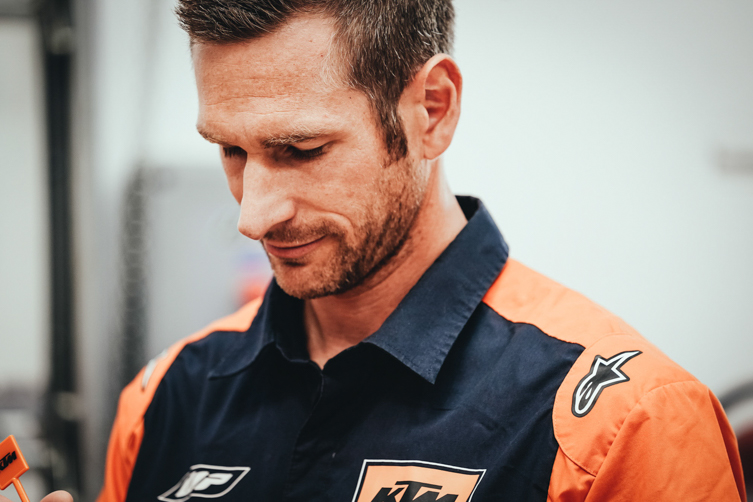
TM: At the international launch’s technical presentation, you said the 2020 bikes’ engines were “a drastic evolution over their predecessors, but not new-generation powerplants”. Was that under-selling the things?
MV: Maybe it was under-selling them [laughs]. By referring to the evolutionary approach we took with these 2020 bikes, what I meant is that we did not make any radical changes to the position of the shafts for the crank and/or clutch and/or transmission. In other words, no major changes to the core engine itself. As an engine guy, a new-generation or new concept engine is defined by making big changes to the positions of the major shafts, which is what we did back in 2017 for the enduro range. So, for 2020, we stayed with the base engine concepts, but then refined or evolved all capacities – both the two- and four-stroke – very significantly. The four-stroke top-ends received a lot of attention, as did the exhaust systems on all models. Plus we worked on a number of points where we found the design or reliability or performance could be improved.
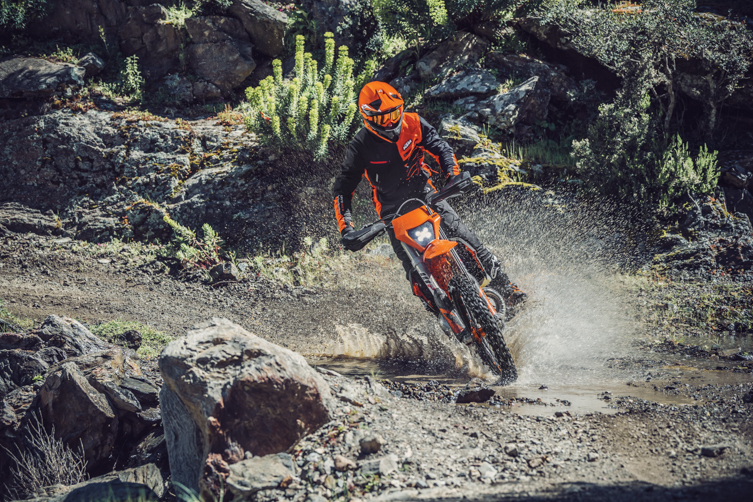
In other words, you made refinements to allow each engine to reach – or get closer to – its potential.
Exactly. We knew we had the most powerful and rideable engines in their classes, so there’s no point in throwing everything out the window and starting again.
![]()
“For 2020, we stayed with the base engine concepts, but then refined or evolved all capacities – both the two- and four-stroke – very significantly.”
![]()
With the two-strokes now accounting for half of KTM’s off-road sales, it makes sense that a large portion of the R&D energy is tipped into the TPI engines. Where did you focus your attention for 2020 with the two-strokes? And where was the biggest opportunity to find gains?
I would say that the 450/500 four-strokes and all the two-strokes got the biggest upgrades for 2020. The new, more compact cylinder head concept for the 450 and 500cc models is a major change because it also noticeably affects the bikes’ agility. But, you’re right; we have put a lot of time and effort into refining the two-strokes, and we’ve introduced the Transfer Port Injection (TPI technology) to the 150EXC for the first time this year. With all the two-strokes models, we found major gains via the new exhaust systems, and through more sophisticated hardware and software in the bikes’ engine management systems (EMS).
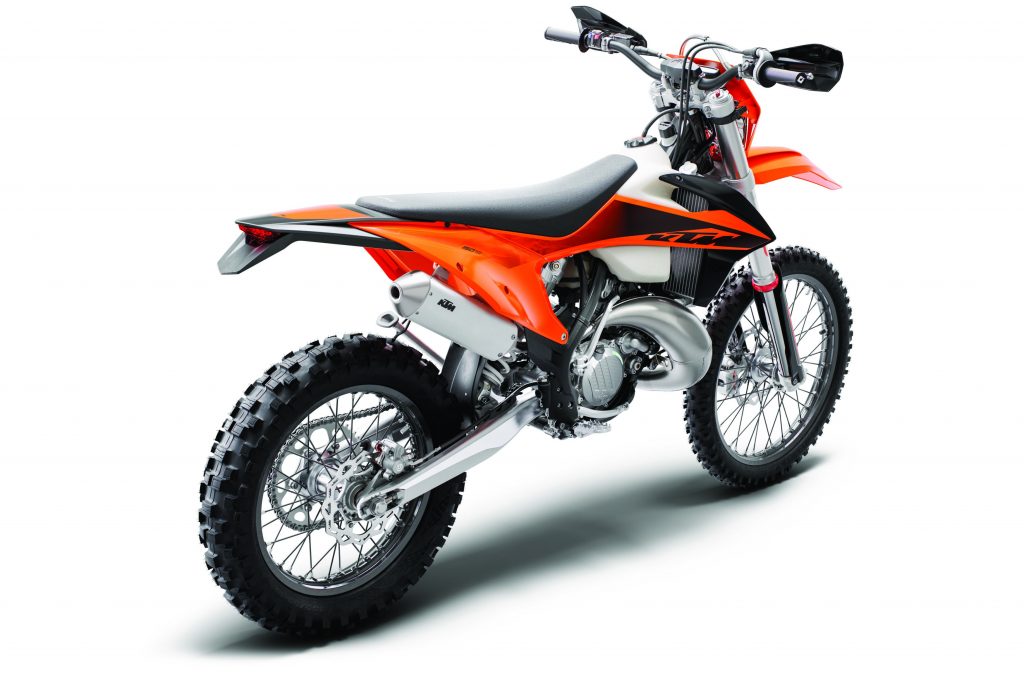
Conventional wisdom suggests that adapting the TPI technology to the smaller-capacity 150 would be relatively more difficult. Was it?
No. Adapting the TPI technology to the 150 was relatively easy. And by that, I mean the development ran closer to plan than it did two years ago when we were first introducing TPI to the 250 and 300cc models. After two years’ experience with TPI on the other models – and converting a carburettor model to injection – we were ahead of the curve when it came to adapting TPI to the smaller displacement. To accommodate the TPI, the 150’s engine needed to be fitted with a more powerful stator, which means a new ignition cover as well. We also fitted the 150 with the new Diaphragm Steel (DS) clutch system that we introduced to selected motocross models last year, but with EXC-specific clutch plates that have a slotted pad surface for better clutch disengagement and better feel when engaging. We also changed the cylinder, did a complete overhaul of the port timing, a different compression ratio, a different spark plug, and different injectors to the bigger-capacity two-strokes – on one side, at least, meaning we have asymmetrical injector sizes on this 150 model. And lastly, we have the all-new exhaust system, which was specifically developed only for this displacement. It’s not just a modified 125 or 200cc pipe; it’s specifically designed for this enduro-spec 150EXC TPI.
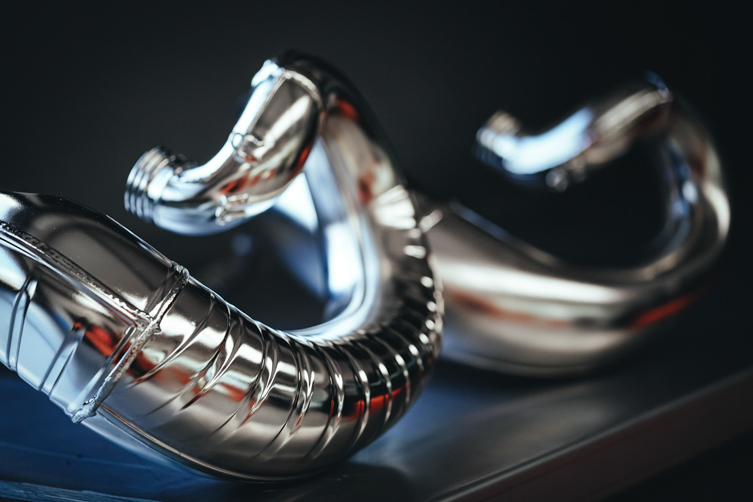
Why didn’t the 150’s pipe get the ribbed corrugations seen on the 2020 250 and 300EXC, seeing as they generated power gains and dampened noise emissions?
One step at a time, Andy [laughs]. You will have to wait till the future. And we want to gauge the market’s reaction to the new ribbed expansion chambers we have bought out on the 250 and 300cc models. Without creating the exhaust system specifically for the 150, we would not have been able to generate the torquey power character we knew this bike would need for enduro application. If you were to ride the 150EXC TPI back-to-back with the 150SX, you would see what a major difference this enduro-specific pipe makes. Aside from being a lot longer, the 150cc enduro pipe has much different diameters.
![]()
“After two years’ experience with TPI on the other models – and converting a carb model to injection – we were ahead of the curve when it came to adapting TPI to the 150EXC.”
![]()
Speaking of two-stroke expansion chambers, would you say that the new exhausts on the two-stroke models were the primary component behind the enhanced power delivery for 2020?
The new exhaust is one of many improvements we’ve made to these two-strokes, but it is definitely a major one. But it’s probably more accurate to say that the combination of the exhaust system and the revised cylinder port timing is what generates the power gains.
You made several references to the thermodynamics of the 2020 engines. Explain what you mean by that.
Thermodynamics is everything that is happening inside the engine combustion-wise, and every component involved has a direct impact on the amount and nature of the power the engine develops.
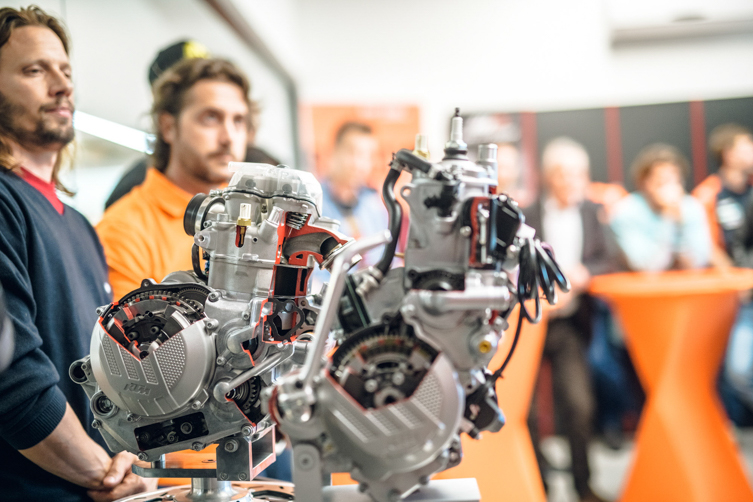
When speaking about the engines’ EMS, you said much of the detail had flown under the radar in previous years. What did you mean by that?
With fuel injection these days – particularly with the four-strokes, which have had EFI for many years now – everyone expects the mapping to be perfect. And they aren’t necessarily aware of how much time and energy goes into developing the maps, and what a key role that a good map plays in he performance of a modern motorcycle. We tend to talk about hardware changes a lot because they are visibly different to the predecessor, while software changes are not obvious. So it was simply a matter of me wanting to point out how significant these invisible software changes have been for the 2020 bikes. Plus, I believe that the sophistication of our EMS and mapping represents one of the biggest advantages we have over our competition.
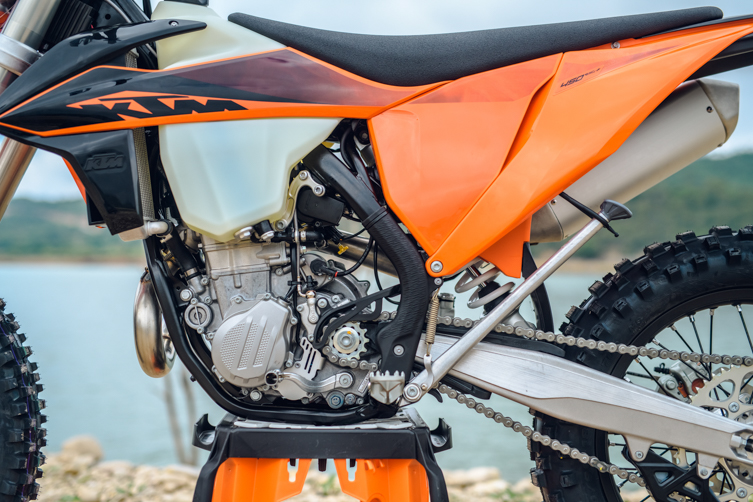
Can you explain the role of the new ambient air pressure sensor that’s been added to the two-strokes for 2020.
All EMS systems – for two-strokes and four – need a sensor that measures altitude or ambient air pressure to calculate the correct values for injection and ignition. On our four-strokes, we calculate it with the manifold pressure sensor, which gives us a reliable measurement of ambient air pressure. On the two-strokes, we previously used a crankcase pressure sensor. This sensor gave us somewhat of an unfiltered signal, which was not as accurate a measure of ambient air pressure as we’d like it to be at certain RPMs and load parameters. Now, for the 2020 models, we have a new sensor (it’s mounted under the oil reservoir) that is only responsible for delivering this ambient air pressure sensor signal to the ECU. And that means any compensation for fuel and ignition timing is made immediately. In other words, it’s much more sophisticated and refined.
![]()
“We take the issue of developing parts specifically for enduro very seriously because we know it’s absolutely not acceptable to deliver a motocross bike to an enduro rider.”
![]()
What’s the rationale behind the 250/350cc four-stroke engines getting higher compression ratios for 2020?
Flame-outs have always been an issue with fuel-injected single-cylinder four-strokes, especially with the bigger-displacement engines. If you engage the clutch at the ‘wrong’ moment, you can slow down the crank so much that it doesn’t come over the compression stroke. Despite many people thinking that higher compression would create more flame-outs, the reverse is actually true. It’s due to the fact that, with a higher compression ratio, you get a more stable combustion. The fuel/air mixture in the combustion chamber burns more equally, which helps avoid the delayed burning cycles that tend to create flame-outs.
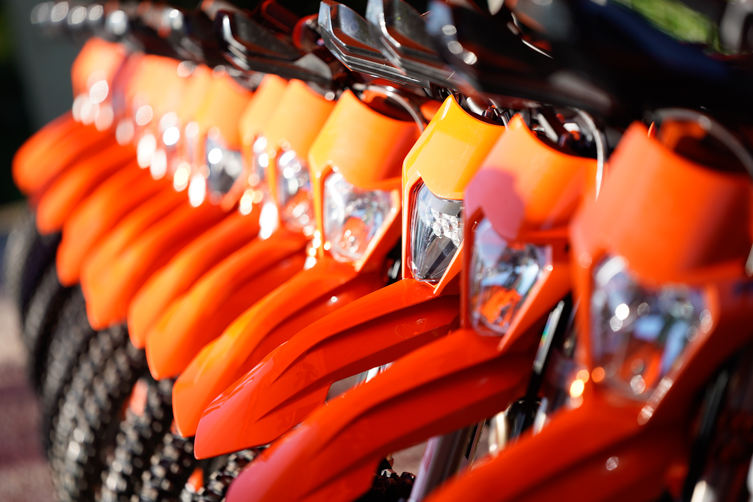
From the outside, these 2020 enduro engines appear to get the same mods we saw 12 months prior on the 2019 MX models. But internally, these EXC models’ engines get very different components, right?
They do. The engine cases and water jacket and cooling system on these 2020 EXC models looks to be the same as their motocross counterparts. But in actual fact, from piston to conrod to crankshaft to flywheel to clutch to exhaust to mapping, etcetera, the parts are completely different because they have been developed specifically for enduro. Of course, we try to use common parts if possible, but only where there is absolutely no compromise in performance for its application. We take this issue very seriously because we know it’s absolutely not acceptable to deliver a motocross bike to an enduro rider.
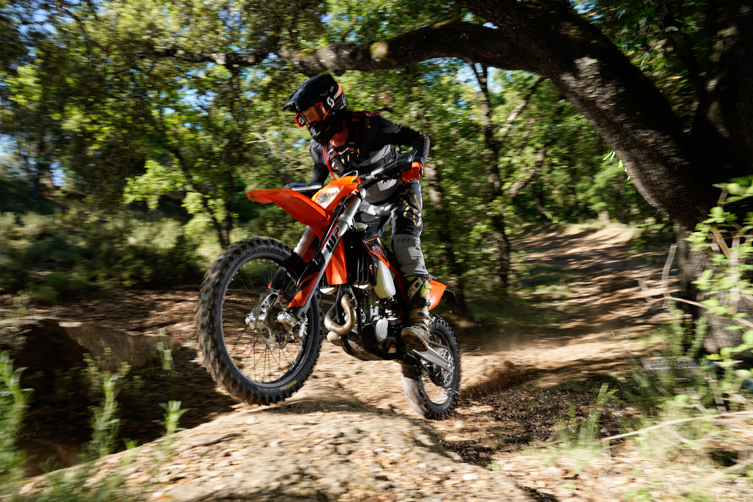
The combination of the 15mm lower head and weight savings on the 450/500cc engine for 2020 makes the new bikes noticeably more agile. That benefitted the 2019 450SX-F, but would you say it stands to benefit the 2020 EXC-F models more?
I would agree with that because on a motocross track, you can take more premeditated lines, whereas for enduro riding, you often get less warning about direction changes. And that means the reduced centrifugal forces of this more compact 2020 450/500cc engine will offer a greater advantage. It’s not just the lower position of camshaft, but also the 500 grams less weight to move from side to side.
alf a kilogram is a lot to shave from a top-end. How did you manage that?
Well, it got a lot slimmer. We managed to remove a lot of material from the old head – mainly by reducing wall thicknesses where it was not required. We also changed the concept of the water jackets to make the cooling system more efficient. So it was the combination if a few things. In addition to that, we saved another 300 grams from the engine cases on all four-strokes by removing the kick-starter boss for 2020.

Explain the reasons behind the throttle body changes on the 2020 four-strokes.
The enduro models’ throttle body retain their 42mm diameters, versus the 44mm bodies on the motocross bikes. The main change we’ve made is the design of how the throttle cable meets the throttle body. Now that it’s further to the front, there’s less friction than previously. In response to a request from Roger DeCoster and our race teams in America, we also added some material under the manifold pressure sensor. This eliminated some of the minor leakage problems they’d reported. Plus there’s been a few casting updates for the 2020 throttle bodies.
One thing I noticed with all the models at the launch – on the two-strokes and four – was how noticeably different the power curves were with Map 1 and Map 2.
That was a very intentional, and the difference between the maps is definitely much bigger than it was in the past. Generally speaking, the main area of difference is through the lower RPM range, where the power and throttle response – particularly with the four-strokes – is noticeably different. At higher RPMs, the differences between the soft and aggressive maps is much less.
More on the 2020 KTM EXC Range

🎥 TESTED: KTM’S 2020 EXC ENDURO RANGE

KTM’S 2020 EXC RANGE: OBSERVATIONS

KTM’S 2020 EXC ENDURO RANGE: IN CONTEXT
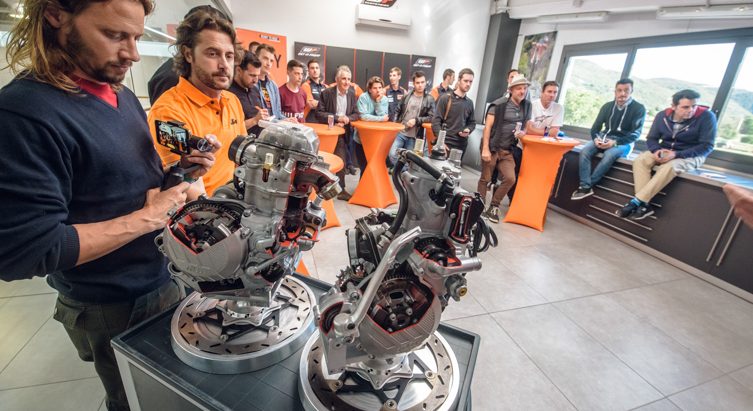
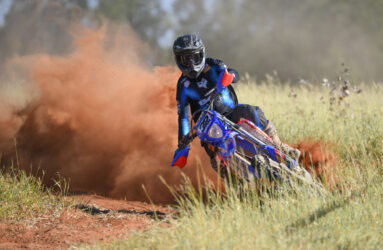







Be the first to comment...